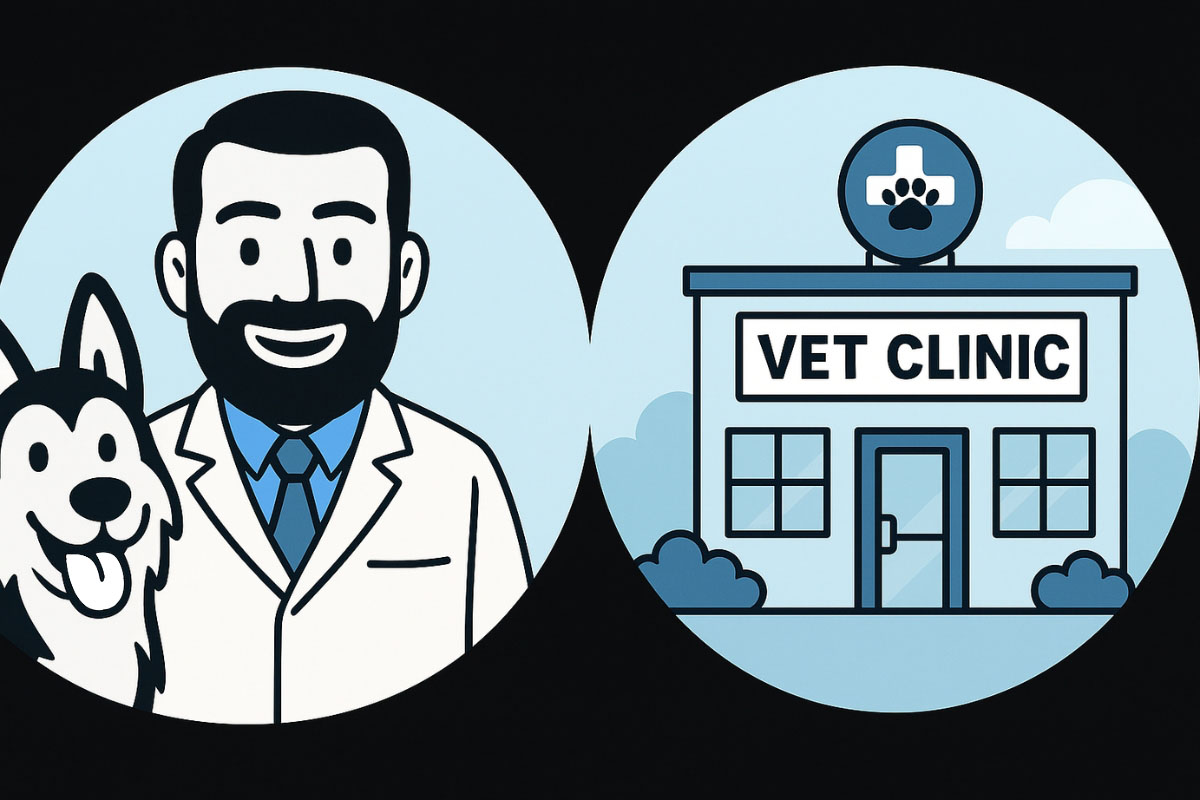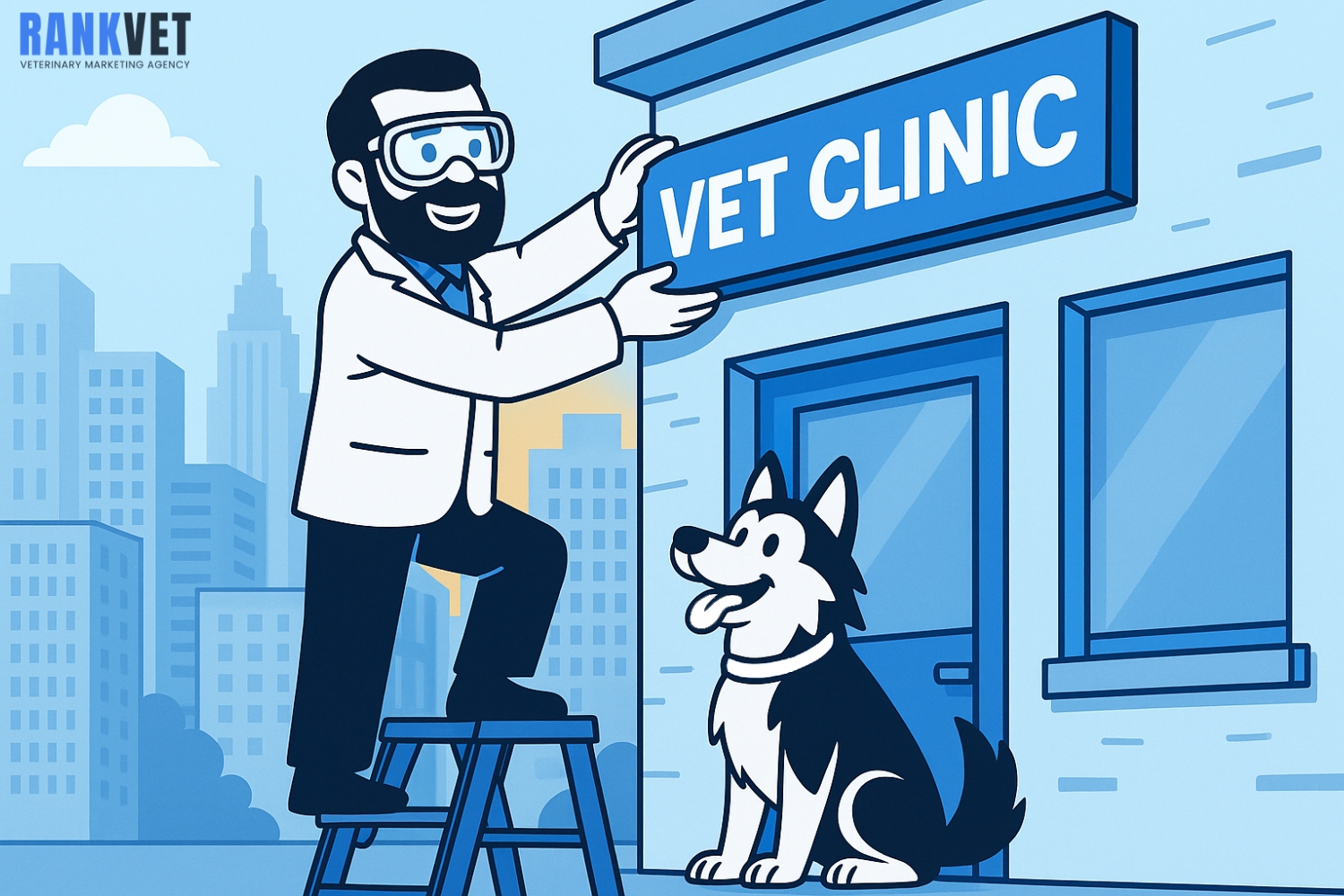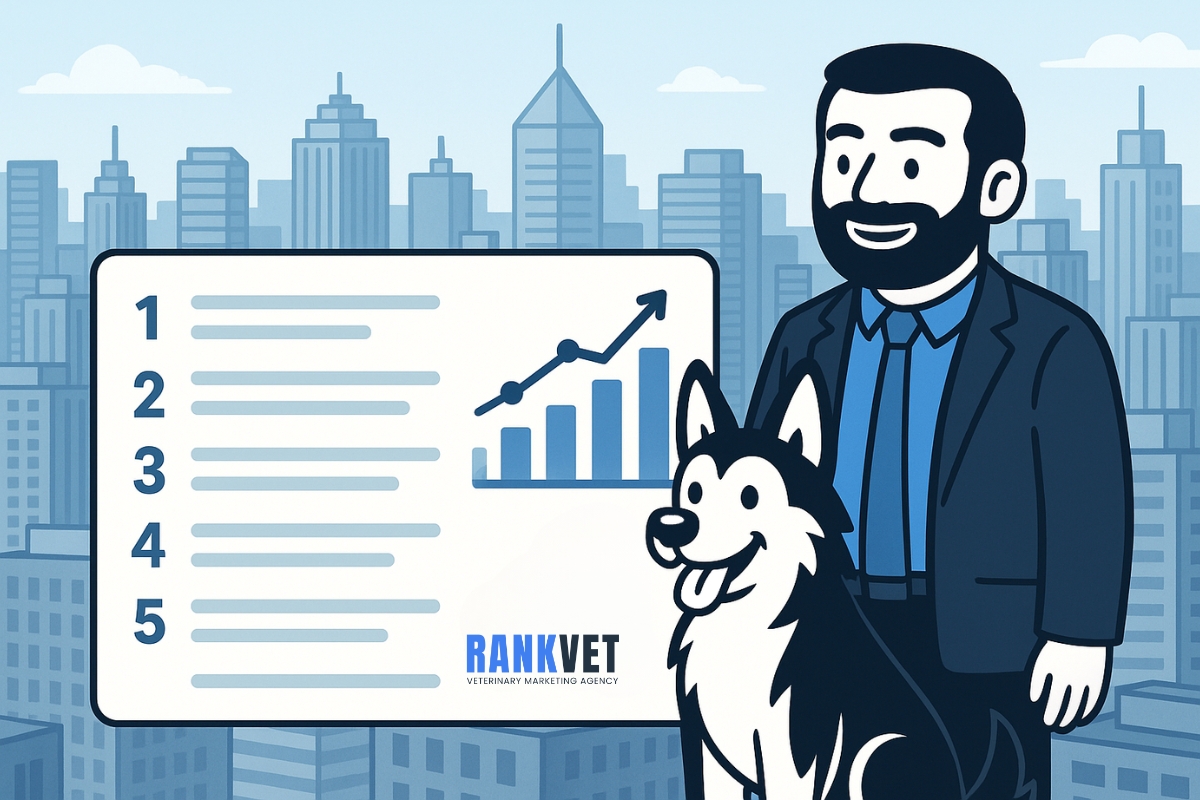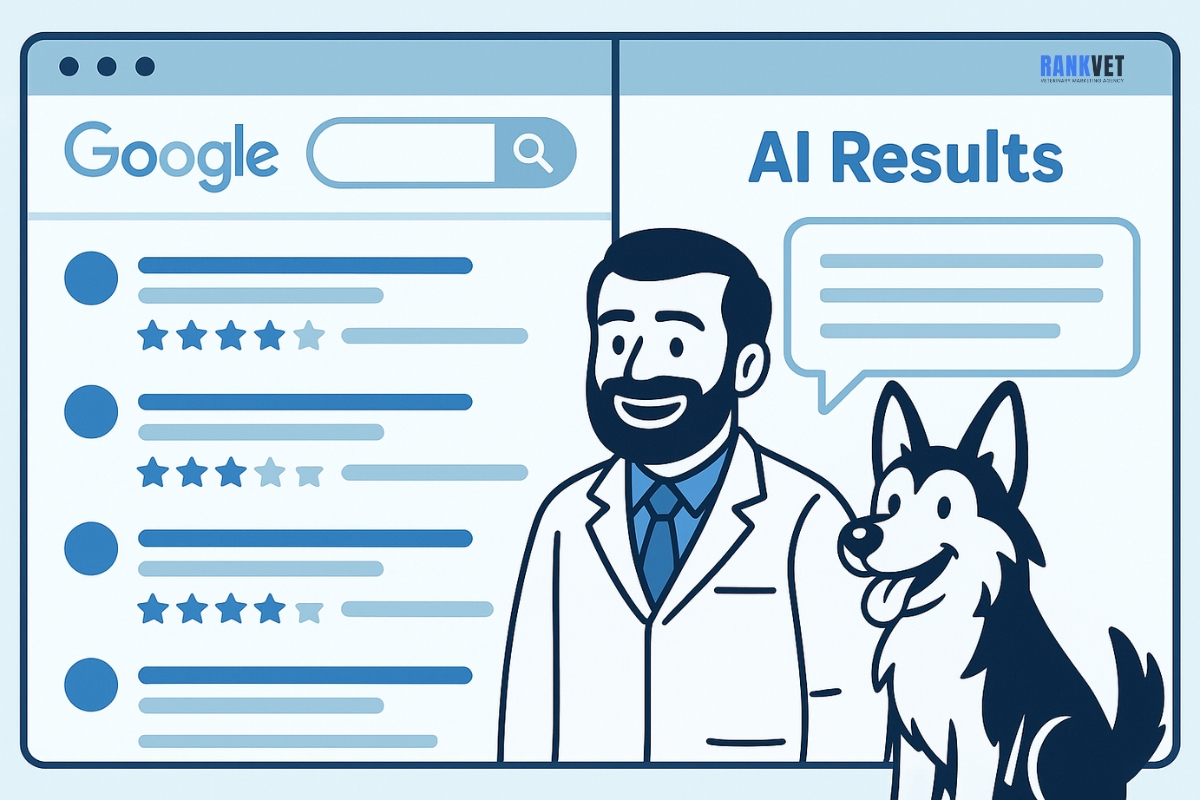Hi, Andrei here – veterinarian by diploma, digital strategist by obsession. Almost every week a clinic owner asks me the same two-part question: “What is SEO, and will it really do anything for my local practice?” In human speak, search engine optimization is the art-plus-science of getting your hospital to appear when a worried pet parent types “vet near me” at 10 p.m. It covers everything Google can “see,” from the structure of your website to the consistency of your address on obscure directories.
Why does it matter? Because visibility equals trust, and trust equals booked exams. Some 2024 snapshot showed that 93 % of pet owners rely on Google to find a clinic, while 72 % visit a provider within five miles once they’ve searched. If you’re not in the top three local results (the “map pack”), you’re invisible to seven out of ten potential clients – period. Veterinary SEO isn’t some optional tech upgrade; it’s the modern version of putting your sign on the busiest intersection in town and making sure it’s lit 24/7. In the sections below I’ll break down exactly how it works, how Google decides who wins, and the 90-day plan I use to double new-client calls for clinics that thought “SEO” was another vaccine code.
Decoding Veterinary SEO: Beyond Generic Digital Marketing
General digital marketing tips – “post on Instagram, run ads, write blogs” – feel overwhelming when you’re juggling surgeries, staff shortages, and that lab report still sitting in the fax tray. Veterinary SEO slices through that noise by focusing on the specific ranking factors that matter for animal hospitals:
- Local intent trumps broad traffic. A thousand clicks from the other side of the country won’t book appointments; a dozen hyper-local clicks will.
- Regulatory language. Veterinary boards frown on superlatives (“best surgeon in town”). Your copy must persuade without triggering compliance headaches.
- Species-specific services. A dog-only clinic needs different keywords than an equine hospital. Google’s “Products & Services” fields let us signal that nuance.
At RankVet we treat SEO like preventive care: diagnose hidden technical issues (slow servers, schema errors), administer on-site treatments (optimized titles, service pages, structured data), and build immunity with authoritative backlinks and 5-star reviews. The result isn’t vanity traffic; it’s a waiting room filled with the cases you actually want.
Key Components of a Winning Veterinary SEO Strategy
- Technical foundation – SSL, mobile-first design, < 2 s load time. Google’s Core Web Vitals now influence local rankings.
- On-site relevance – Service-by-service pages (e.g., “laser therapy for cats”), each with unique meta data and FAQs that answer real client queries.
- Google Business Profile (GBP) – Correct category (“Veterinarian”) plus secondary specialties, geo-tagged photos of the clinic, and weekly posts.
- Schema markup –
LocalBusiness,VeterinaryCare, andFAQPageschemas feed Google exact data about hours, payments, and common questions. - Reputation signals – A steady stream of genuine Google reviews averaging 4.5★+, amplified on-site via review widgets for E-E-A-T.
- Local backlinks & citations – Listings on VetRatingz, LocalVets.com, state VMA directories, plus sponsorship shout-outs from animal-rescue sites.
When these six pillars fire together, you create what I call the “trust loop”: Google ranks you higher because real-world signals prove you’re the go-to clinic, and pet parents trust you because Google validated that claim.
The Search Mindset of Today’s Pet Parents
Millennial and Gen-Z owners treat pets like first-born children and smartphones like stethoscopes. 68 % of health-related searches start on a mobile device, and vet care is no exception. These owners want instant reassurance – an answer, a price range, an open-now button – before they even step in the car. Your SEO strategy therefore must mirror this “zero friction” mindset: visible hours, click-to-call, online booking, and prominent ⭐ ratings above the fold.
The Rise of “Near Me” Queries in Pet Healthcare
Google Trends shows “veterinarian near me” spiking every Sunday evening – prime time for mystery limps and upset stomachs. The algorithm interprets “near me” as a local pack intent, pulling three clinics into the map carousel. Ranking here depends on proximity, prominence, and relevance. You can’t move your building, but you can supercharge prominence (reviews, backlinks) and relevance (optimized service pages). Case in point: after adding “urgent care” and “after-hours triage” as secondary GBP categories, a RankVet client in Seattle jumped from position 7 to position 2 for “emergency vet near me” within five weeks.
Mobile vs Desktop Behavior for Vet Searches
Desktop users spend time comparing services – think dental cleanings, TPLO pricing – while mobile users seek immediate contact. Google’s mobile interface shows tap-to-call buttons right inside the map pack, meaning a three-click pathway can turn searcher → caller → booked exam. In our analytics dashboards, clinics see 50–60 % of organic conversions originate from mobile, and that share rises to 75 % in multi-location urban areas. Your takeaway: optimize for speed, compress images, and ensure your booking form auto-fills on iOS/Android. These UX tweaks aren’t just good design – they feed the engagement metrics Google watches to decide if you deserve the coveted top slots.
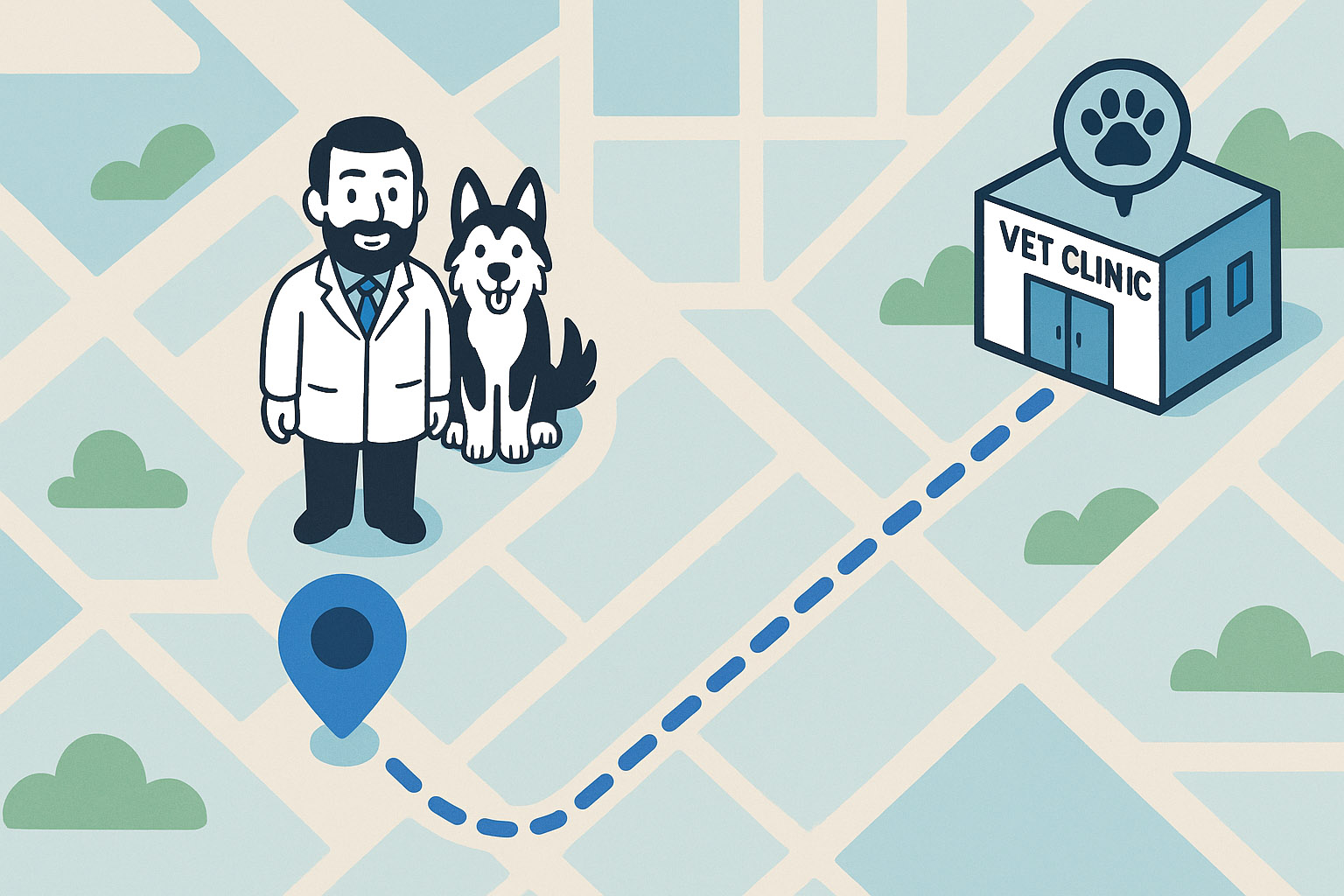
How Google Ranks Veterinary Clinics Locally
Google’s local algorithm weighs three macro buckets:
- Relevance – How closely your content matches the query (“rabbit spay cost”).
- Distance – How geographically near the searcher you are.
- Prominence – How authoritative you appear online (reviews, backlinks, citations).
While distance is fixed, relevance and prominence are malleable. For veterinarians that means meticulous on-page optimization and community-driven authority building.
Google Business Profile Signals
Your GBP is the control tower for local SEO. Complete every field, including “Services” and “Products.” Use custom UTM parameters on GBP links to track traffic in GA4. Post weekly – Google treats fresh posts like micro-blogs, rewarding active profiles with visibility boosts. Pro tip: add pricing FAQs (even ranges) in the Q&A section; clinics that do so see up to 18 % more phone taps because they remove cost anxiety early.
On-Site Relevance and E-E-A-T for Veterinarians
E-E-A-T – Experience, Expertise, Authoritativeness, Trustworthiness – matters doubly in Your Money or Your Life topics like pet health. Strengthen it by adding an “About the Medical Team” page with bios, credentials, and conference presentations. Embed author schema on blog posts so Google can connect content with licensed professionals. Mention your state license number in the footer; it’s a tiny trust cue that algorithm crawlers can parse.
Local Backlinks and Citations
A backlink from the American Animal Hospital Association beats ten from generic directory farms. Prioritize local + industry overlap: sponsor a 4-H club, guest blog on the state VMA site, or partner with rescue groups for adoption-day recaps (each recap links back). Citations – anywhere your NAP appears – must be identical down to “Ste.” vs “Suite.” Use a tracker like BrightLocal to audit inconsistencies quarterly. In one RankVet cleanup project, standardizing a clinic’s NAP across 47 sites moved them from #5 to #3 in the map pack for “cat dentist” within eight weeks.
Measuring the ROI of Veterinary SEO
If it isn’t measured, it doesn’t improve – or justify the budget. Forget vanity impressions; booked appointments are the north-star KPI.
From Keyword Rankings to Booked Appointments
Rankings → Clicks → On-site actions → Calls → Exams. We tag each stage with UTM parameters and call-tracking numbers. For example, “dog vaccination clinic” ranks #1, drives 120 clicks, 45 form fills, and 30 confirmed wellness visits worth $65 each. That’s $1,950 in new revenue from a single keyword cluster. Multiply across services and you see why clinics that invest $1.5k/mo in SEO routinely post 400–600 % ROI within a year.
Tracking Call Conversions Without Breaking Compliance
CallRail or CallTrackingMetrics let you assign dynamic numbers to Google organic traffic, but boards dislike “burner” numbers. Solution: use HIPAA-compliant pools that ring your main line and display your real number in the final booking confirmation. Store audio for 30 days max, redact personal data, and delete per GDPR/CCPA where required. Transparency protects you legally and signals trust to privacy-savvy owners.
When to Call in a Veterinary SEO Specialist
DIY works up to a point – then growth plateaus. Signs you’re ready for professional help:
- You rank #4–5 consistently but can’t crack the top three map results.
- Your team lacks time to write authoritative content every month.
- You expand to a second location and need multi-GBPs synced.
- Competitors outrank you with schema and backlink tactics you don’t have bandwidth to replicate.
That’s where an agency like RankVet—founded by a veterinarian who speaks both medicine and marketing—steps in. We handle the heavy lifting so you can get back to dentals, not domains.
Final Thoughts: SEO Is Preventive Medicine for Your Practice
Just as annual wellness exams catch problems before they balloon into emergencies, an ongoing SEO program keeps your clinic ahead of search-algorithm changes and competitor moves. Ignore it and you’ll still have clients – but they’ll trickle in while the clinic down the street scoops up the midnight “near me” searches. Embrace it and you build a self-sustaining pipeline of qualified pet owners who already trust you before they dial your number.
If you’re ready to turn Google into your most reliable referral source, start with the 90-day plan above – or book a free strategy call with me at RankVet. Your future patients are already searching; let’s make sure they find you first.


